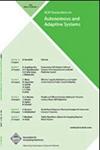点对点网络中自适应bt蠕虫的建模和防御
IF 2.2
4区 计算机科学
Q3 COMPUTER SCIENCE, ARTIFICIAL INTELLIGENCE
引用次数: 1
摘要
BitTorrent (BT)是最常见的点对点(P2P)文件共享协议之一。与从单一来源下载文件不同,该协议允许用户加入一群对等体,同时从彼此处下载和上传文件。利用BT服务器或跟踪器信息的蠕虫会对参与的同伴造成严重损害,不幸的是,这一点以前被忽视了。在本文中,我们首先介绍一种新的蠕虫,称为自适应bt蠕虫(a - bt蠕虫),它发现新的受害者并传播向跟踪器发送伪造请求。为了减少其异常行为,蠕虫估计被感染的同伴的比例,并自适应调整其传播速度。然后,我们建立了一个混合模型来精确表征蠕虫的传播行为。我们还提出了一种统计方法,通过估计请求时间间隔的方差来自动检测跟踪器中的蠕虫。为了减缓蠕虫的传播,我们设计了一种安全策略,当接收到请求时,跟踪器返回安全的对等体。最后,通过仿真验证了混合模型的准确性,以及我们的检测方法和遏制策略的有效性。本文章由计算机程序翻译,如有差异,请以英文原文为准。
Modeling and Defending against Adaptive BitTorrent Worms in Peer-to-Peer Networks
BitTorrent (BT) is one of the most common Peer-to-Peer (P2P) file sharing protocols. Rather than downloading a file from a single source, the protocol allows users to join a swarm of peers to download and upload from each other simultaneously. Worms exploiting information from BT servers or trackers can cause serious damage to participating peers, which unfortunately has been neglected previously. In this article, we first present a new worm, called Adaptive BitTorrent worm (A-BT worm), which finds new victims and propagates sending forged requests to trackers. To reduce its abnormal behavior, the worm estimates the ratio of infected peers and adaptively adjusts its propagation speed. We then build a hybrid model to precisely characterize the propagation behavior of the worm. We also propose a statistical method to automatically detect the worm from the tracker by estimating the variance of the time intervals of requests. To slow down the worm propagation, we design a safe strategy in which the tracker returns secured peers when receives a request. Finally, we evaluate the accuracy of the hybrid model, and the effectiveness of our detection method and containment strategy through simulations.
求助全文
通过发布文献求助,成功后即可免费获取论文全文。
去求助
来源期刊

ACM Transactions on Autonomous and Adaptive Systems
工程技术-计算机:理论方法
CiteScore
4.80
自引率
7.40%
发文量
9
审稿时长
>12 weeks
期刊介绍:
TAAS addresses research on autonomous and adaptive systems being undertaken by an increasingly interdisciplinary research community -- and provides a common platform under which this work can be published and disseminated. TAAS encourages contributions aimed at supporting the understanding, development, and control of such systems and of their behaviors.
TAAS addresses research on autonomous and adaptive systems being undertaken by an increasingly interdisciplinary research community - and provides a common platform under which this work can be published and disseminated. TAAS encourages contributions aimed at supporting the understanding, development, and control of such systems and of their behaviors. Contributions are expected to be based on sound and innovative theoretical models, algorithms, engineering and programming techniques, infrastructures and systems, or technological and application experiences.
 求助内容:
求助内容: 应助结果提醒方式:
应助结果提醒方式:


